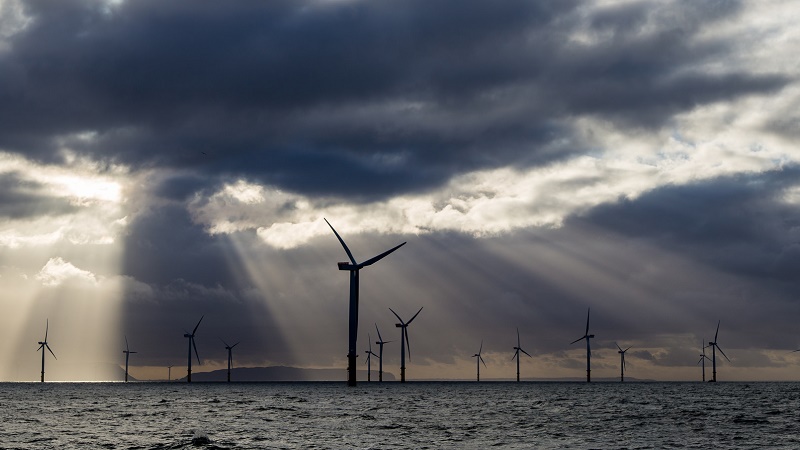Europe’s “energy union” was conceived in response to Russia’s incursion into the Ukraine, primarily to reduce reliance on gas imports from a hostile foreign power.
A plan to connect up member states and boost resilience to potential supply shocks swiftly ballooned to cover climate and affordability goals too.
As a second annual status report came out on Wednesday, it was clear Donald Trump’s pivot on climate change had eclipsed Moscow as the main threat.
“Based on the recent announcements we have heard, of course we are concerned,” said European Commission vice president Maros Sefcovic in a press conference.
Stressing that he hoped for EU-US cooperation to continue, he said: “We see that some of the actions that have been announced might lead to a situation where the EU would have to assume leadership in the fight against climate change.”
Climate commissioner Miguel Arias Canete emphasised Europe was “forging ahead with the clean energy transition” on twitter.
Despite the current geopolitical uncertainties, Europe’s forging ahead with the clean energy transition. More on Wednesday. #CleanEnergyEU pic.twitter.com/pu0lUTWZDX
— Miguel Arias Cañete (@MAC_europa) January 31, 2017
That is the rhetoric. The reality is more humdrum. Here are a few takeaways from the stocktake of progress.
1. The EU is set to meet its 2020 targets…
Greenhouse gas emissions in 2015 were 22% lower than in 1990, already exceeding the 2020 goal of 20%. Renewables and energy efficiency are on track.
Sefcovic emphasised the bloc’s GDP grew 50% over the same period. “This successful decoupling makes us one of the most greenhouse gas-efficient among all developed economies,” he said.
2. …but arguably those targets are too weak
The flipside of this over-achievement is that it takes some momentum out of the market for clean technology and services. Emissions rose slightly in 2015, the latest year for which full data is available.
“Current progress does not mean that the EU can rest on its laurels, because it has set the bar extremely low,” said Wendel Trio, director of CAN Europe.
“Being on track to reach our current weak targets gives one additional argument that the EU can and must do more to scale up climate ambition. Aligning the energy transition with the Paris Agreement will require more ambitious climate and energy targets, strong legislation, and additional measures such as deadlines for phasing out fossil fuels.”
3. Member states need to get on board
It’s one thing to proclaim policy from Brussels, another to get action on the ground. Wind Europe points out only seven of the 28 member states have clear policies in place for renewables after 2020.
While some capitals take pride in green leadership, others are reluctant passengers. Poland, most visibly, sees coal as its route to energy security, whatever the environmental consequences.
Sefcovic is hitting the road to try and get everyone on the same page. Asked about Poland, he suggested tackling “dangerous” air pollution in cities could motivate action. “What we are proposing to Poland is extending a hand for cooperation.”
4. Fossil fuel infrastructure faces scrutiny…
For the first time, in a discussion of the cross-border pipes and wires that are at the heart of the energy union project, the report mentioned stranded asset risk.
This is the danger that fossil fuel investments might not pay off as climate policies and clean technology bite. Alternatively, vested interests create a “carbon lock-in” effect, crowding out cleaner alternatives.
“We will pay particular attention to avoiding stranded assets,” Sefcovic confirmed in the press conference.
5. …but gas pipelines still reign supreme
Confusingly, though, the footnote backing this up refers to an October report by the European Environment Agency specifically on power plants.
The Commission does not yet appear to have joined the dots between its energy efficiency plans and the investment case (or lack of it) for gas pipelines.
Sefcovic hailed progress on the Southern Gas Corridor, a controversial mega-project based on the assumption of strong gas demand.
Analysis by think tank E3G finds the level of demand foreseen by network companies is incompatible with climate goals.
6. Carbon capture has stalled
The EU requires developers of large-scale coal or gas plants to assess the feasibility of capturing its emissions and pumping them underground.
They did so for 29 projects since 2013 and in no case did the economics stack up. Some set aside land to retrofit the technology should a higher carbon price make it viable in future.
Failure to develop carbon capture and storage will make it much harder and more disruptive to meet international climate goals, scientists warned this week.
